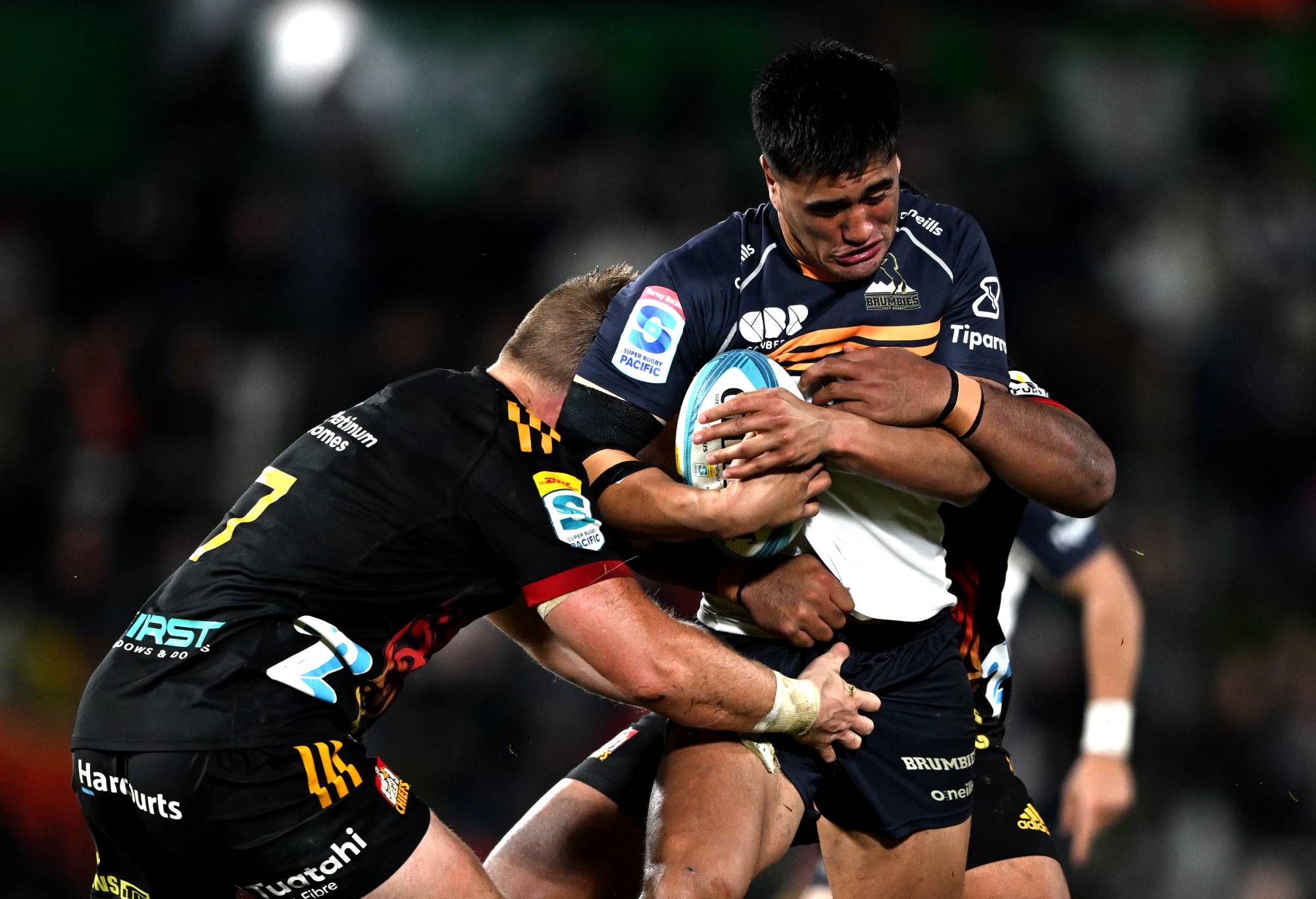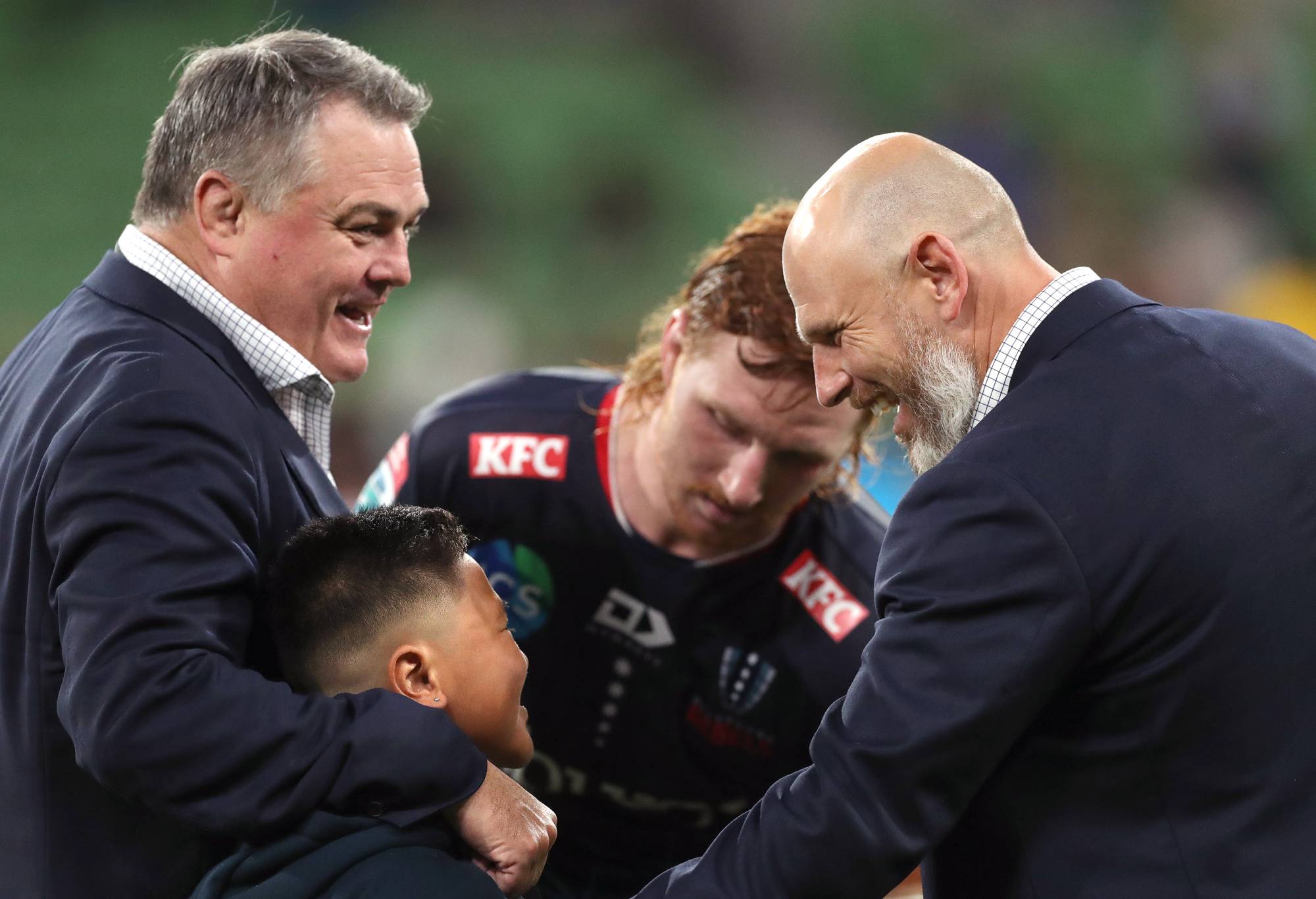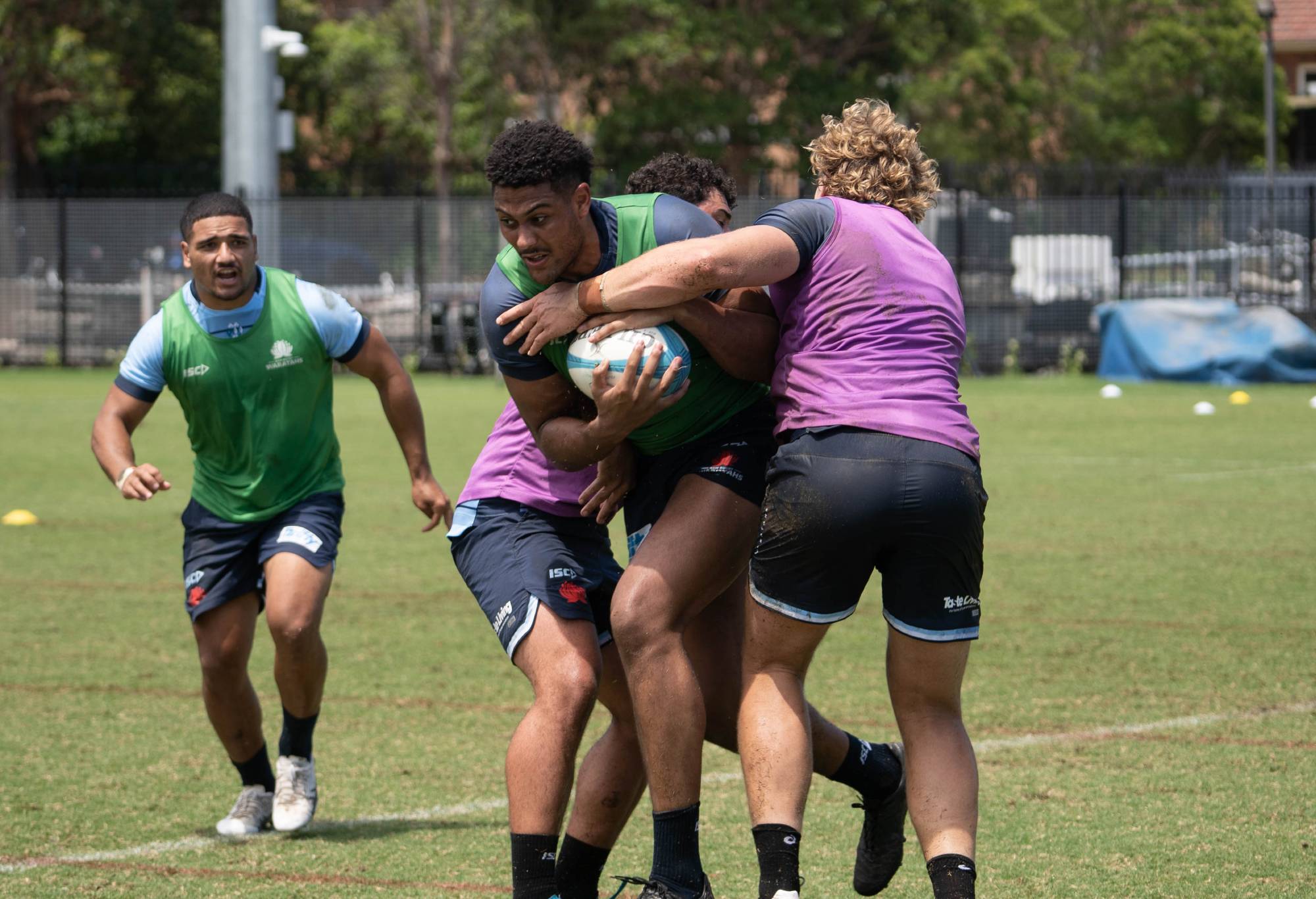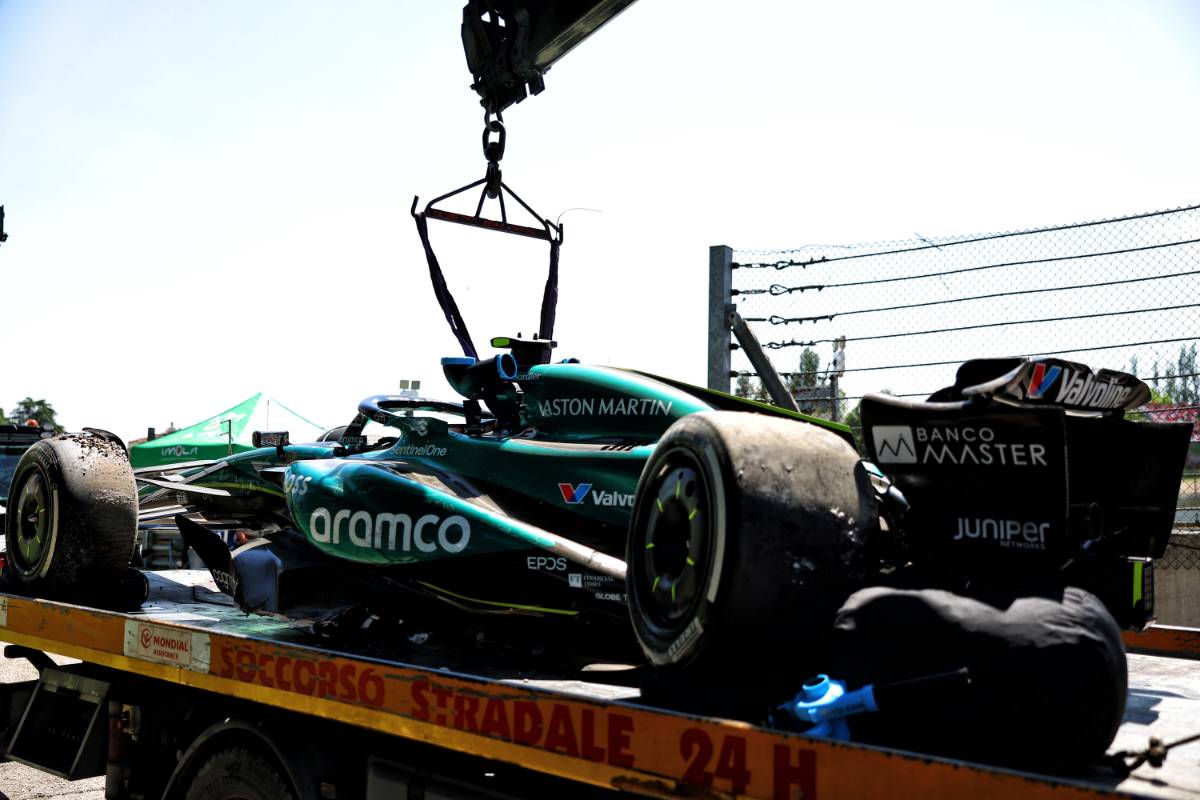2024 offers a rare opportunity of continuity for Australian Super Rugby sides despite being at the start of a four-year world cup cycle, and this may be a key factor which sees results improve. It’s something new Wallabies coach Joe Schmidt will be rubbing his hands about.
Most Super Rugby rosters have either retained and/or recruited well, and except for the Queensland Reds their coaching make-ups have remained relatively unchanged.
This continuity in coaching mantra, squad make-up and combinations can create cohesion, a metric which is vital for any team’s success.
Although 2024 is shaping to be an improved year for results, each team still has one significant work-on to overcome before their fortunes can change.
1. ACT Brumbies
Work-on: Attack
Despite the men from the capital scoring 71 tries in 2023 (third most overall), they have a few areas in attack which they can improve on.
Under the watchful eye of one of the nation’s best playmakers in Stephen Larkham the Brumbies finished seventh for line breaks, eighth for defenders beaten and last for offloads.
The offload stats are likely a part of the Brumbies’ conservative mantra, but the other data points show an attack that has room to improve.

The ACT Brumbies need to expand their attacking game to challenge for the Super Rugby title. (Photo by Hannah Peters/Getty Images)
Competition winners, the Crusaders, scored 81 tries in one game more, ranked sixth for line breaks, fifth for defenders beaten, and seventh for offloads.
If their recipe for success is anything to go by, only a slight shift is needed to make the Brumbies a genuine title contender.
Defence is what got them to the semi-finals along with the accurate goal-kicking of Noah Lolesio and the canon of a boot from Jack Debreczeni.
There were glimpses of individual brilliance from Debreczeni and speedster Corey O’Toole, who bagged nine tries, but overall the team’s attack lacked dynamism and complexity.
The gameplan may shift naturally with Ryan Lonergan taking over from the Western Force recruit Nic White at halfback, but it is something which the Brumbies must actively address.
In a competition like SRP, penalty goals will not win them a Super Rugby Pacific title, nor shake the Brumbies’ semi-finals stagnation.
Upside: Squad continuity
The Brumbies are the Australian side which has changed the least. Apart from White and Pete Samu, there are no Wallabies or starting XV members to have left.
In the front row there is healthy Wallaby and Australia A stock to ramp-up competition, the second row is no different.
The backline is littered with Wallabies and a strong crop of up-and-coming talent.
Larkham’s biggest challenge and asset is the quality of his squad and with new coaching addition in former Wallaby Ben Mowen, it will be all about how to challenge and lift this established roster to an SRP Final.
2. Queensland Reds
Work-on: Ruck
It’s hard to know exactly what Les Kiss will be focusing on first, but ruck efficiency and security is a key pillar he must address.
The ruck can be the start of a team’s success and its failures. It can spur an attack into action, and it can be the first line of defence.
Whilst a bolstered roster of props will help at scrum time, it may also offer an opportunity to recalibrate how the Reds use their players to be more efficient around the park.

Queensland Reds coach Les Kiss. (Photo by Brendan Hertel, QRU)
The revamp should see players like Harry Wilson and Fraser McReight used in the wider channels to make use of their ball handling skills and speed.
If quick ruck speed in attack can be achieved out wide, then the backline may finally live up to its potential.
Upside: Les Kiss
The head coach brings with him fresh ideas, a wealth of experience and a different mantra to Brad Thorn.
Although the previous head coach was a determined character, he struggled to imbue the Reds with detail in both attack and defence.
Along with his new coaching staff and recruits, Kiss will hopefully be able to unlock the burgeoning talent in his young squad.
If Kiss can bring the northern hemisphere mentality to the ruck and set piece, elusive backline plays should see the reds have much-improved results.
3. Melbourne Rebels
Work-on: conceding points on the counter
The Rebels in 2023 were very much a double-edged sword.
Despite being able to score quick points, they conceded points even quicker. The counterattack had the Rebels chasing their own tail only seconds after being on the offensive.
If Kevin Foote’s men want to go better than they did in 23’ then the side will need to harness its energy and control it.
Too often players were isolated, and a quick turnover bamboozled arriving defenders.

Kevin Foote’s side were exposed on then counter in 2023. (Photo by Kelly Defina/Getty Images)
The Rebels held firm if they survived past three phases, this was thanks to a well devised defensive shape, but the inability to shut down the initial break cost them on the ladder.
For 2024 the Rebels need to improve on scramble defence protocols, as well as control the tempo on defensive ruck speeds, which will allow them to get set in their defensive shape.
Upside: Recruitment
The Rebels are the side that have recruited the heaviest in Australia.
The signings of Taniela Tupou and Lukhan Salakai-Loto make the Rebels the biggest pack on this side of the Tasman.
The two signings also provide an opportunity to have the most dominant scrum in the country, with almost an entire Wallabies propping roster of Pone Fa’amausili, Sam Talakai and Mat Gibbon alongside the ‘Tongan Thor’.
Salakaia-Loto gives the second row genuine size and experience, something which the host of young, promising second row stocks in Angelo Smith, Josh Canham and Daniel Maiava will learn a bunch from.
In the backs the competition heats up with a wealth of quality entering the fray.
At halfback, England one cap halfback Jack Maunder will duel it out against the incumbents.
Meanwhile, former All Black Matt Proctor will add experience to the centre channels.
Filipo Daugunu has joined Tupou on his journey down south from the Reds. His ability to cover both wings and outside centre will allow Foote some much needed versatility after the departure of Reece Hodge.
Darby Lancaster will add X-factor to an enhanced backline roster.
4. NSW Waratahs
Work-on: Forward efficiency
2023 was not the Waratahs’ year for so many reasons, but a big one was their inability to use their forwards efficiently.
Darren Coleman was adamant his forwards needed to be bigger, so beef was put onto the frames of the men who were his agile and skilful rovers of 2022.
From game one a silky tip on game was implemented, but this quickly became predictable, and his new colossuses were picked-off without making much ground.

Miles Amatosero is one of Darren Coleman’s new recruits. Photo: Julius Dimataga, NSW Media
The result was a poor platform for a struggling fly-half in Ben Donaldson.
Whether Coleman retains his beef-cake theory or whether it is fleet-footed footy he wants, he is going to have to buy into one methodology wholeheartedly.
Another season of half measures will see a similar-looking roster have another disappointing season.
Upside: experience
The Waratahs roster is on the older side and with that age comes a wealth of experience. With combinations being established across the park.
The forwards see some welcomed recruitment with the biggest signings being Miles Amatosero and Fergus Lee-Warner. The pair have experience in the French Top 14 and Premiership respectively.
If Coleman can implement an attacking gameplan that will utilise the unique strengths of players like Angus Bell and Mark Nawaqanitawase then the rest of the team has the skill and knowledge to capitalise, with a wealth of talent strewn throughout the squad.
5. Western Force
Work-on: Attack
The Force of late have been a toothless tiger and despite having some electric finishers over the years, have still struggled to score points.
In 2023 they only scored 46 tries, sitting dead last for tries scored.
The departure of three classy wingers in Manasa Mataele, Zach Kibirige and Toni Pulu doesn’t help this shortcoming.
Head coach Simon Cron is only in his second year in the west and must be given time to mould his team, but it is safe to say that his squad is lacking in depth and experience.

Nic White has joined the Wallabies. (Photo by Chris Hyde/Getty Images)
Cron is a respected coach, if his squad can fulfill his vision, then the talents of Harry Potter and Ronan Leahy can perhaps fill the shoes of those that have left the west.
Upside: Rehab-group and recruitment
The lack of depth in the squad meant losing Izack Rodda in the second row and up-and-coming playmaker Reesjan Pasitoa spread the squad thinly.
It will be interesting to see what happens with Ben Donaldson.
The Wallabies utility wasn’t valued as highly by the Waratahs as he was by Eddie Jones and there is still debate whether he is a true five-eighth, considering he has played some of his best rugby in the 15 jersey both at SRP and Test level.
Game management is something the Force have done poorly, and White’s arrival will help turn some of the closer losses into wins.
It can be an improved year for the Australian Super teams, but each franchise carries the responsibility equally, and results for Australian rugby must begin in SRP before hoping it can be achieved on the international stage.














You must be logged in to post a comment Login